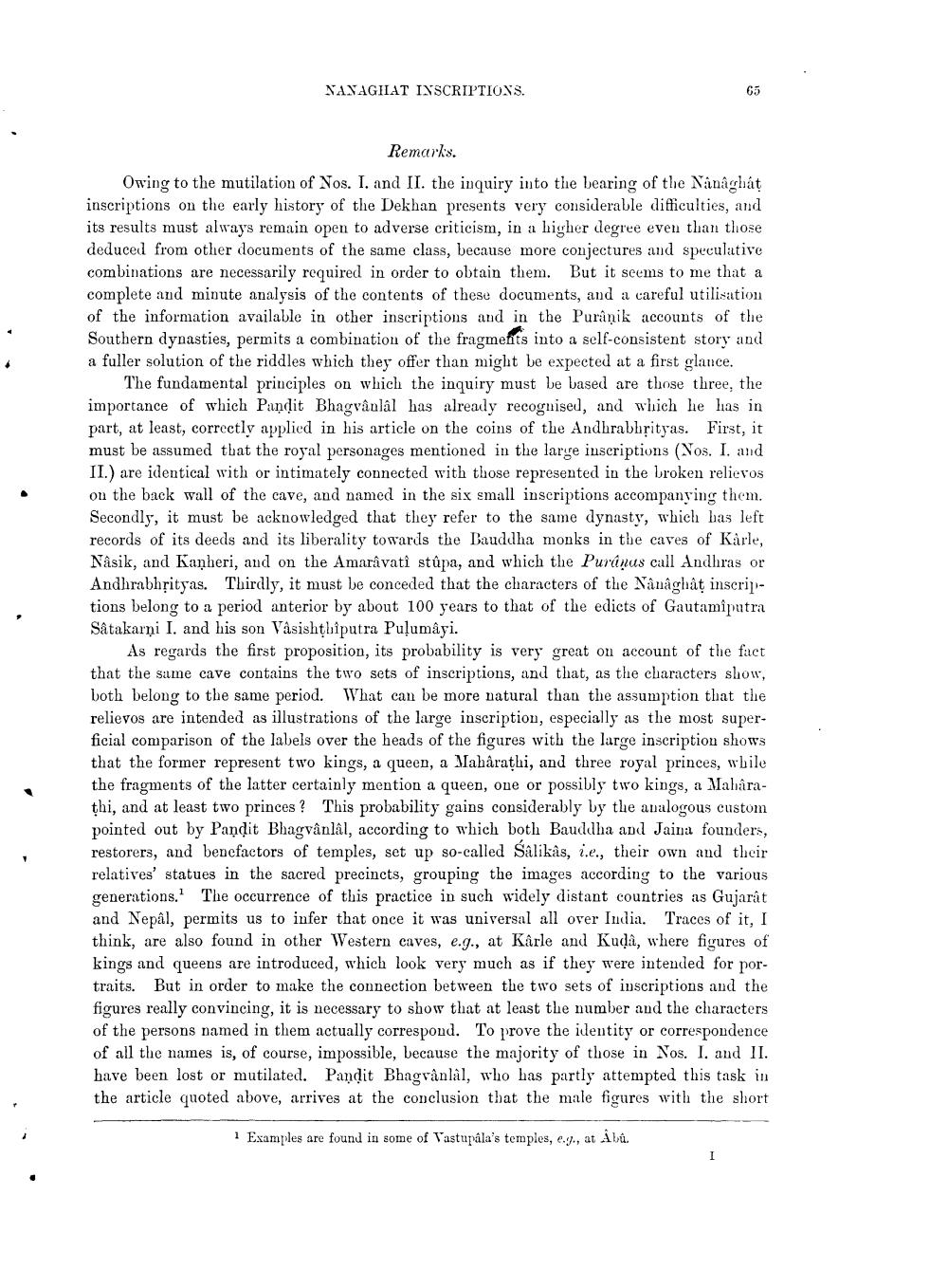________________
XANAGHIAT IXSCRIPTIONS.
65
Remarks. Owing to the mutilation of Nos. I. and II. the inquiry into the bearing of the Nânâghat inscriptions on the early history of the Dekhan presents very considerable difficulties, and its results must always remain open to adverse criticism, in a higher degree even than those deduced from other documents of the same class, because more conjectures and speculative combinations are necessarily required in order to obtain them. But it seems to me that a complete and minute analysis of the contents of these documents, and a careful utilisation of the information available in other inscriptions and in the Puranik accounts of the Southern dynasties, permits a combination of the fragments into a self-consistent story and a fuller solution of the riddles which they offer than might be expected at a first glance.
The fundamental principles on which the inquiry must be based are those three, the importance of which Pandit Bhagvânlal has already recognised, and which he has in part, at least, correctly applied in his article on the coins of the Andhrabhsityas. First, it must be assumed that the royal personages mentioned in the large inscriptions (Nos. I. and II.) are identical with or intimately connected with those represented in the broken relievos on the back wall of the cave, and named in the six small inscriptions accompanying them. Secondly, it must be acknowledged that they refer to the same dynasty, which has left records of its deeds and its liberality towards the Bauddha monks in the caves of Karle, Nasik, and Kanheri, and on the Amaravati stúpa, and which the Puránus call Andhras or Andhrabhsityas. Thirdly, it must be conceded that the characters of the Nânâghåt inscriptions belong to a period anterior by about 100 years to that of the edicts of Gautamiputra Satakarni I. and his son Våsishthiputra Puļumâyi.
As regards the first proposition, its probability is very great on account of the fact that the same cave contains the two sets of inscriptions, and that, as the characters show, both belong to the same period. What can be more natural than the assumption that the relievos are intended as illustrations of the large inscription, especially as the most superficial comparison of the labels over the heads of the figures with the large inscription shows that the former represent two kings, a queen, a Mabârathi, and three royal princes, while the fragments of the latter certainly mention a queen, one or possibly two kings, a Maharathi, and at least two princes? This probability gains considerably by the analogous custom pointed out by Pandit Bhagvânlâl, according to which both Bauddha and Jaina founders, restorers, and benefactors of temples, set up so-called Śâlikâs, i.e., their own and their relatives' statues in the sacred precincts, grouping the images according to the various generations. The occurrence of this practice in such widely distant countries as Gujarat and Nepal, permits us to infer that once it was universal all over India. Traces of it, I think, are also found in other Western caves, e.g., at Kârle and Kuda, where figures of kings and queens are introduced, which look very much as if they were intended for portraits. But in order to make the connection between the two sets of inscriptions and the figures really convincing, it is necessary to show that at least the number and the characters of the persons named in them actually correspond. To prove the identity or correspondence of all the names is, of course, impossible, because the majority of those in Nos. I. and II. have been lost or mutilated. Pandit Bhagvânlål, who has partly attempted this task in the article quoted above, arrives at the conclusion that the male figures with the short
1 Examples are found in some of Vastupala's temples, e.g., at Åbů.




